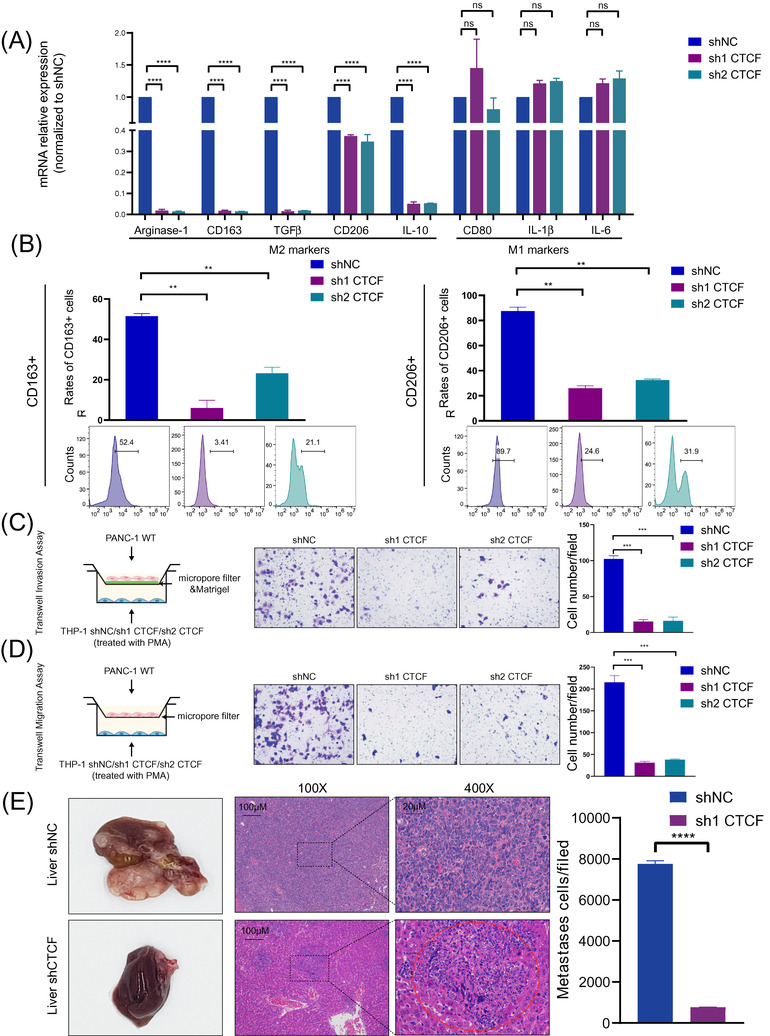FIGURE 2.

Knockdown of CCCTC‐binding factor (CTCF) hinders the M2 polarization and pro‐tumour functions of THP‐1‐derived tumour‐associated macrophages (TAMs). (A) Quantitative polymerase chain reaction (qPCR) analysis of the relative expression of M2 markers (Arginase‐1, CD163, TGFβ, CD206, and IL‐10) and M1 marker (CD80, IL‐1β and IL‐6) in THP‐1‐derived TAMs after CTCF knockdown. THP‐1 cells were treated with phorbol 12‐myristate 13‐acetate (PMA) and co‐cultured with PANC‐1 cells for 2 days. Data are shown as the results from three independent experiments. (B) Flow cytometry analysis of the expression of M2 markers (CD163 and CD206) in THP‐1‐derived TAMs after CTCF knockdown. THP‐1 cells were treated with PMA and co‐cultured with PANC‐1 cells for 2 days. Data are shown as the results from two independent experiments. (C) Invasion capacity of PANC‐1 cells co‐cultured with THP‐1‐derived TAMs (shNC/ shCTCF). shNC means that cells were transfected in negative control plasmids. (D) Migration capacity of PANC‐1 cells co‐cultured with THP‐1‐derived TAMs (shNC/ shCTCF). (E) Representative images of liver metastasis and the number of metastatic cells in the pancreatic ductal adenocarcinoma (PDAC) mouse model, in which PANC‐1 cells mixed with TAMs (THP‐1 shNC/sh1 CTCF) were injected into the spleens of BALB/c nude mice. Data are shown as the results from three independent experiments. * p < .05; ** p < .01; *** p < .001; **** p < .0001
